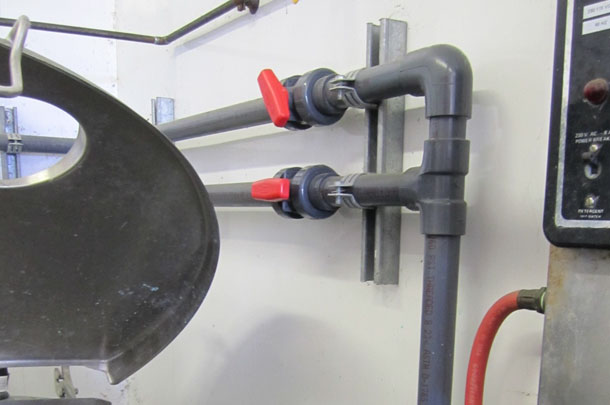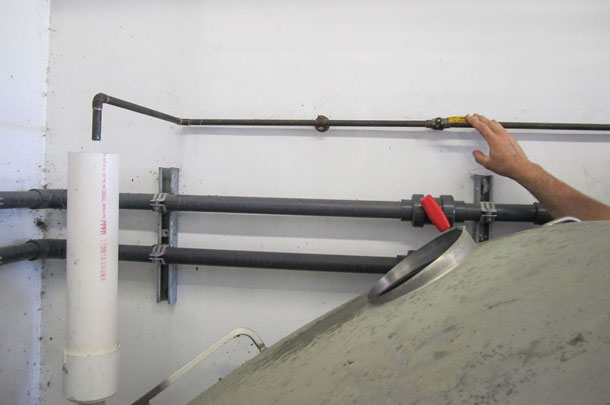Footbaths are commonly used on dairies to reduce the incidence of infectious claw disorders such as digital dermatitis (hairy heel wart) and foot rot. A common practice on many dairies involves adding chemicals to the footbath and mixing these chemicals within the bath. This can result in poor mixing of the chemicals and is also labor-intensive.
Dairyman Kevin Griswold from Tag Lane Dairy in Ixonia, Wisconsin, came up with a footbath mixing system that reduces labor and improves accuracy of the solutions.
Mixing tank
The first component of this system is a mixing tank. Griswold uses a small bulk tank to prepare the footbath solution. The tank comes with a built-in agitator and motor, and the stainless steel is resistant to the corrosiveness of the footbath chemicals. A plastic tank with an agitation system could also be used. A pump could be plumbed to recirculate the solution within the tank to do the mixing.

Transport pump
This system uses a receiver pump from an old milk handling system. The pump is wired to a wall switch. When the footbaths need filling, the pump is turned on.

Plumbing to the footbath
The mixed solution is transported to the footbaths through PVC pipes with a valve in each line. These valves allow for different flow rates to each bath. The valves could also be located at the footbath if desired. The operator at this dairy adjusts the valves so the baths fill to the same volume.
Filling the mixing tank
This is the fill system for the mixing tank. The valve is a simple gate valve. The fill pipe drops the water into the larger PVC pipe to provide a break in the line required by the milk inspector at this farm. The protocol at this dairy is for the night herdsman to prepare the solutions. All he must do is follow these simple steps:
- Fill the tank with enough water for the footbaths for the shift.
- Add the amount of copper sulfate and acidifier required for the bath.
- Close the lid and turn on the agitator.
- When the solution is properly mixed, the transfer pump is turned on and the valves are opened to the footbaths.
- When the tank is empty, the pump is turned off.
The footbaths are filled with the correct solution without a great deal of labor. PD
Floyd W. Sutton is a key account manager for Zinpro Performance Minerals.
PHOTOS: Photos by Floyd W. Sutton.






